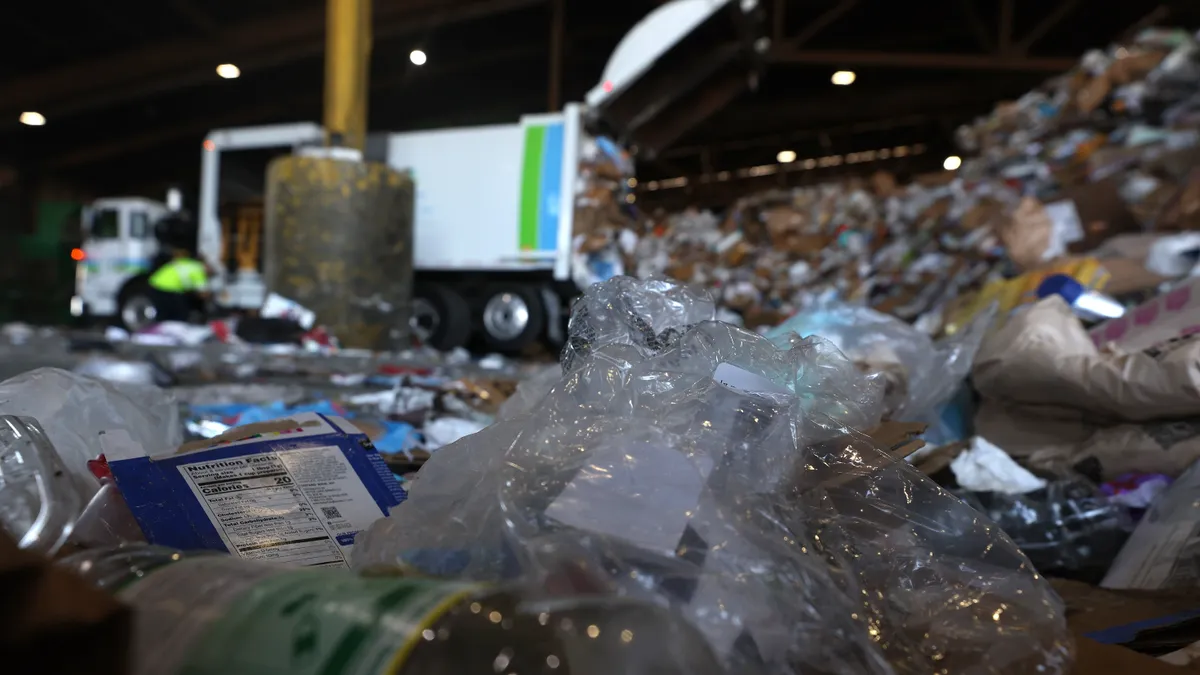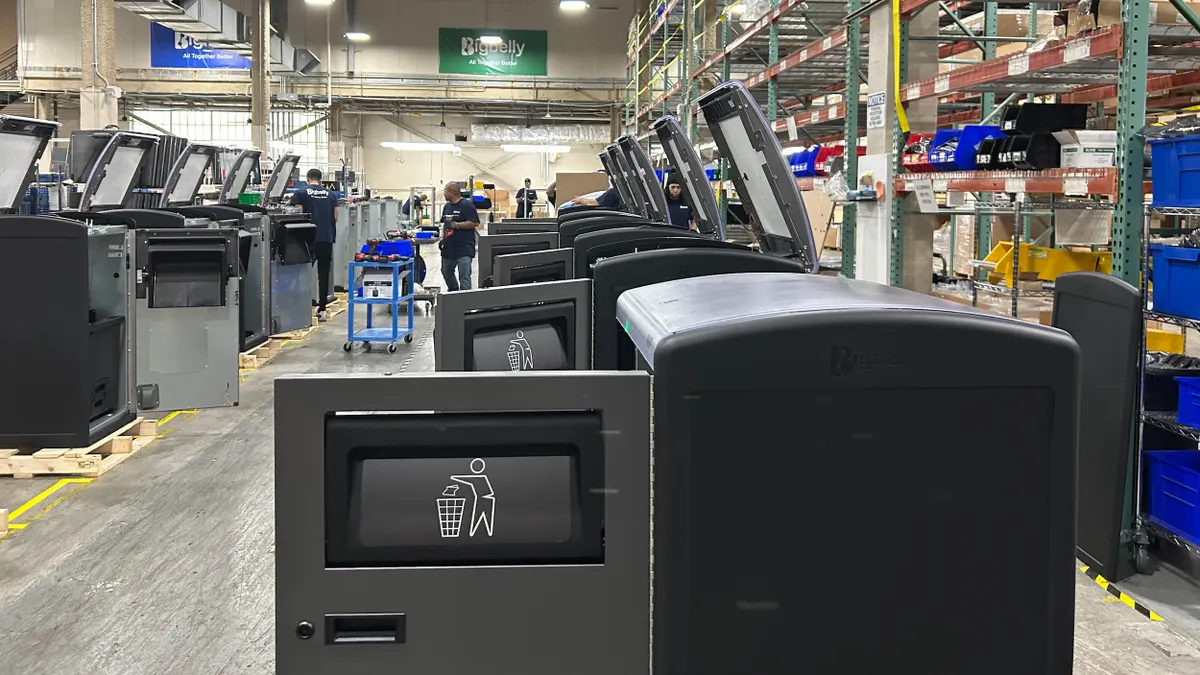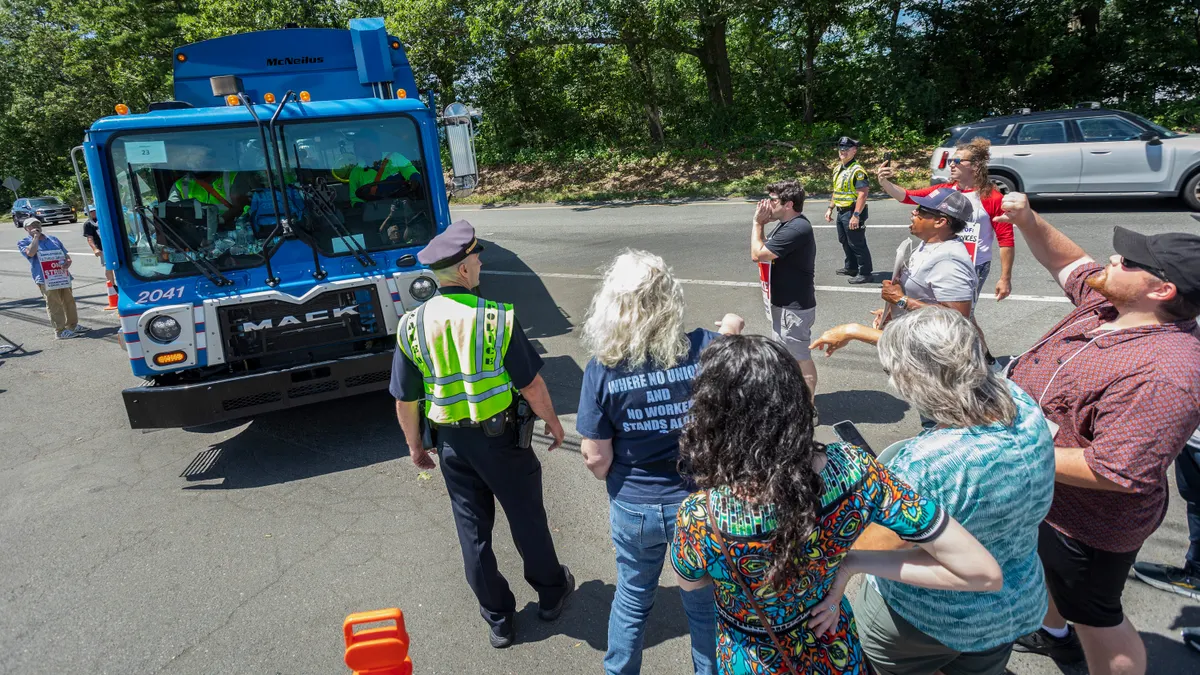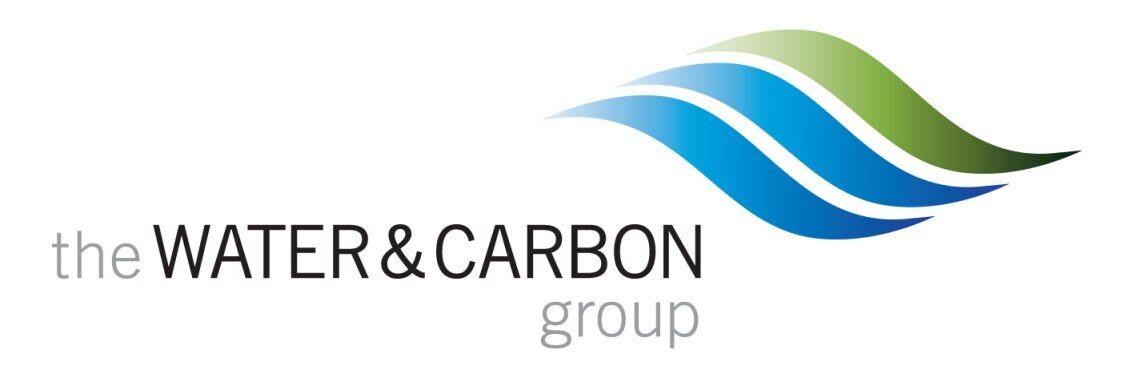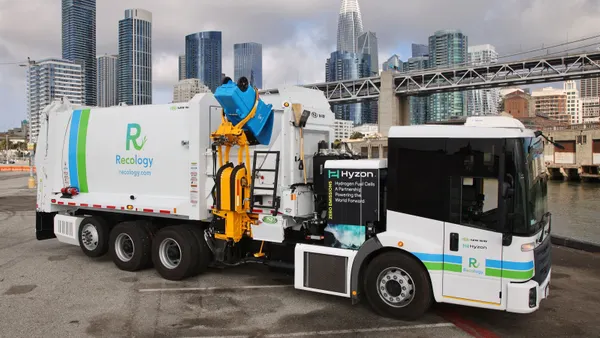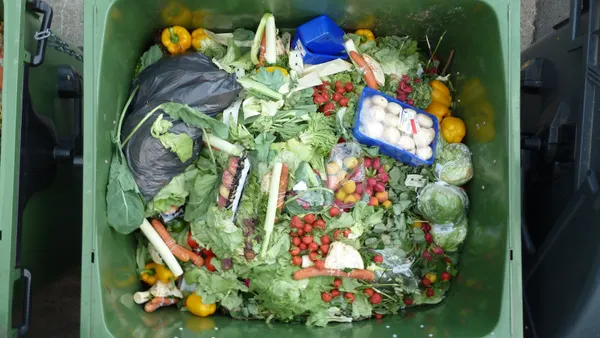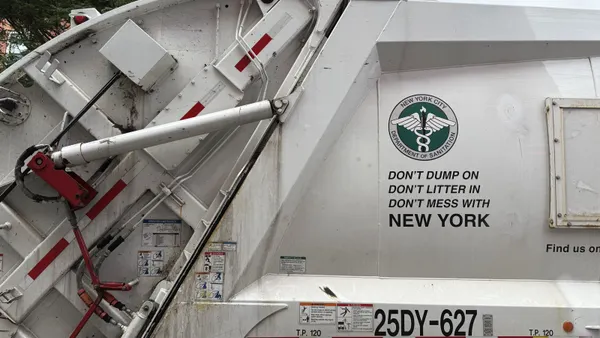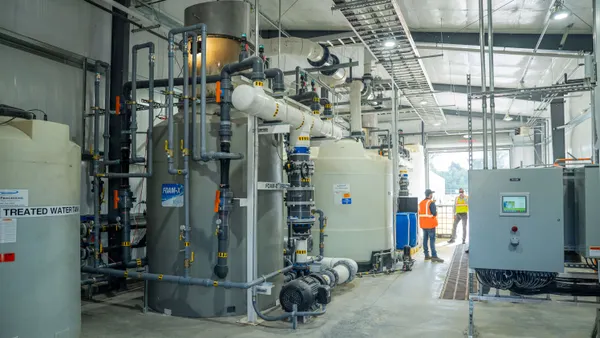Dive Brief:
- Californians threw away nearly 8.5 million tons of single-use packaging and food ware in 2024, according to an updated material characterization study CalRecycle published on Tuesday.
- Last year, about 40 million tons of total material went to landfills. About 21% percent of that was material that will eventually be covered under California’s extended producer responsibility for packaging law, known as SB 54, according to the study.
- The study was meant to measure how much EPR-related “covered material” ends up in landfills, CalRecycle said, such as hair spray cans or pasta sauce jars. That gives insight into how much of that material might be diverted in the future once the EPR program takes effect in 2027.
Dive Insight:
Waste diversion is a major facet of SB 54, the sweeping EPR for packaging law that passed in 2022. SB 54 particularly aims to reduce the amount of certain single-use packaging and plastic single-use food service ware, known as covered material, from entering California landfills.
The law also requires an overall reduction of such packaging, along with requirements to make covered materials recyclable or compostable by 2032.
California first created its covered material list in 2024 and periodically updates it with more types of packaging and products that producers will be responsible for collecting and recycling or composting.
CalRecycle, working with Cascadia Consulting Group, gathered data from 16 landfills in the state between February and April 2025. The extrapolated data aims to provide an overall estimate of statewide disposal trends. The groups sampled landfills run by county operators as well as Republic Services, WM, Waste Connections and Recology, according to the report.
CalRecycle found that the most significant categories of covered materials in landfills were plastic and paper items. The largest proportion of this material is cardboard, making up about 5% of the material sampled, the agency estimates. Flexible and film plastics of various plastic types were another common category, the report said.
As part of the ongoing implementation process for SB 54, CalRecycle was required to conduct this study on landfilled covered materials.
The agency sampled waste that came to the landfill from various “sectors,” such as franchised single-family residential sources, franchised commercial and multifamily residential sources, and “self-hauled” and transfer trailer sources, according to the study.
CalRecycle first published its preliminary findings on June 30, but the agency said its revised report published Sept. 30 offers more advanced statistical analyses on the data.



